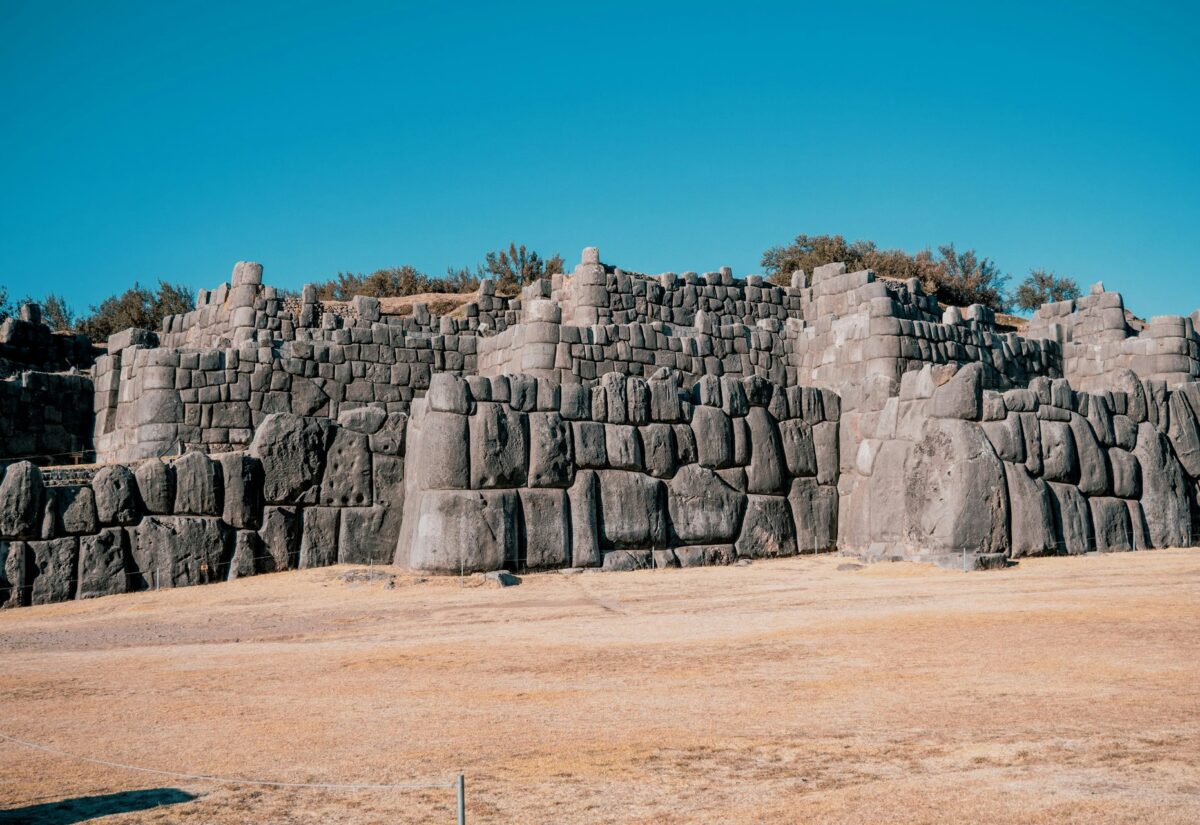Incredible Ancient Engineering Feats Done Without Modern Technology
- Jennifer Still
- May 11, 2025
 Unsplash/Ruben Hanssen
Unsplash/Ruben HanssenWe often think of modern engineering as the pinnacle of human innovation. But long before cranes, cement mixers, and laser-guided drills, ancient builders achieved astonishing feats using tools that today would barely pass as DIY-grade. Across continents and civilisations, humans managed to construct monuments, cities, and structures so precise and vast that they still baffle experts. And they did it all with basic tools, clever design, and sheer human will. These aren’t just old buildings—they’re reminders that intelligence and ingenuity don’t belong to any one era. They’re proof that problem-solving is timeless. Here are some of the most incredible ancient engineering feats completed without modern technology—many of which still can’t be fully explained.
The underground city of Derinkuyu (Turkey)
In the Cappadocia region of Turkey lies Derinkuyu, a multi-level underground city capable of housing over 20,000 people. Carved out of soft volcanic rock, this subterranean wonder includes living quarters, ventilation shafts, wells, chapels, wine cellars, and even schools—all buried dozens of metres beneath the surface.
The city’s design allowed entire communities to vanish underground during invasions, often remaining hidden for weeks or months. Without electricity or heavy machinery, ancient Anatolians created a concealed fortress with sophisticated planning. The ventilation shafts alone—reaching from the deepest levels to the surface—reflect a deep understanding of airflow and survival logistics. The fact that the entire complex was dug using basic chisels and hand tools makes the scale and precision even more impressive.
The Great Pyramid of Giza (Egypt)
Built around 2560 BCE, the Great Pyramid of Giza is one of the most iconic and debated feats of engineering in human history. Comprising more than 2 million limestone and granite blocks, each weighing between 2 and 80 tonnes, it stands as a monument to human persistence and astronomical precision.
The alignment of the pyramid’s sides to the cardinal directions is nearly perfect, and the internal chambers—particularly the King’s Chamber—suggest knowledge of geometry, proportion, and even seismic stability. Theories about how it was constructed range from straight and spiral ramps to counterweight systems and wet sand transportation. Yet no single theory has gained universal acceptance. What is certain is that it was built without iron tools, wheels, or pulleys, making it a triumph of planning, labour organisation, and mathematical understanding.
The Roman concrete marvels (Rome and beyond)
Roman concrete, known as opus caementicium, has endured for millennia, outperforming many modern equivalents. The secret lay in their materials—volcanic ash, lime, and seawater—forming a chemical reaction that continues to strengthen over time, especially in marine environments.
The Pantheon’s dome in Rome, still the largest unreinforced concrete dome in the world, is a marvel of structural balance. Roman aqueducts, like the Aqua Claudia and Aqua Marcia, stretched for miles with gradients as low as 1 in 4,800, delivering fresh water with uncanny consistency. They managed all of this using surveying tools no more advanced than water levels and calibrated rods. The durability of their buildings is not luck—it’s chemistry, mathematics, and an early grasp of material science.
The stone spheres of Costa Rica
More than 300 stone spheres, ranging from the size of a fist to over two metres in diameter, have been discovered in Costa Rica, primarily in the Diquís Delta. Created by the Diquís culture sometime before 1500 CE, the stones are almost perfectly round and made from dense granodiorite.
Their purpose remains a mystery. Some suggest they were aligned with celestial bodies, while others believe they marked property or had ceremonial roles. What’s truly puzzling is how they were shaped with such precision without the use of metal tools. Transporting them across difficult terrain also remains unexplained. They are an enduring symbol of lost techniques and forgotten knowledge.
The megalithic terraces of Sacsayhuamán (Peru)
Located just outside Cusco, Sacsayhuamán is a fortress built by the Incas using massive stone blocks—some weighing over 100 tonnes—fitted together with such accuracy that even today, a knife blade can’t slide between them.
The wall features polygonal blocks of varying shapes and sizes, slotted together without mortar. The result is not only visually stunning but earthquake-resistant. Researchers still debate how the Incas moved and shaped these stones, particularly given the steep terrain and lack of wheeled transport. Some believe they used a combination of ramps, ropes, and brute manpower. Whatever the method, the result is a testament to their understanding of both engineering and the natural landscape.
The Nabataean water systems (Petra, Jordan)
Petra’s intricate water system allowed a civilisation to flourish in the heart of the desert. The Nabataeans designed an elaborate network of aqueducts, dams, clay pipes, and rock-cut cisterns capable of storing millions of litres of water.
This hydraulic infrastructure ensured a steady supply throughout the year and protected the city from flash floods. The combination of engineering, environmental awareness, and urban planning is striking. Their use of gravity-fed systems and water filtration shows that they weren’t just making do in the desert—they were thriving.
The island of Nan Madol (Micronesia)
Nan Madol is a prehistoric city built atop coral reefs off the coast of Pohnpei. Constructed with over 750,000 tonnes of prismatic basalt columns, it was the centre of political and religious life for the Saudeleur Dynasty.
The basalt stones, some weighing up to 25 tonnes, were stacked to form temples, tombs, and canals. There’s no evidence of cranes or wheels being used—only raft transport and manual labour. With little written record, how they sourced, shaped, and moved the stone remains a subject of debate. What’s left is a haunting, half-submerged city that defies easy explanation.
The Longyou Caves (China)
Found accidentally by villagers in the 1990s, the Longyou Caves in Zhejiang Province are a series of 24 massive, hand-carved chambers with consistent ceiling patterns and clean lines. Each cave covers hundreds of square metres, with ceilings as high as 30 feet.
They were carved into solid siltstone with no signs of waste rock or construction tools left behind. No records exist of who built them or why. The uniform chisel marks, estimated to represent hundreds of thousands of hours of labour, indicate they were more than just storage spaces. Some believe they were ceremonial, but their true purpose remains unclear.
The Lalibela rock-hewn churches (Ethiopia)
Built in the 12th century under the reign of King Lalibela, these 11 churches were carved directly into the bedrock of the Ethiopian highlands. The most famous, the Church of Saint George, was excavated in the shape of a cross, descending 12 metres below the surface.
The churches include detailed facades, connecting tunnels, crypts, and drainage systems. Constructed with only chisels and hammers, each church was carved from top to bottom, essentially sculpting the structure in reverse. The scale, symmetry, and spiritual dedication embedded in the architecture are unmatched. It remains a pilgrimage site to this day.
The Pont du Gard aqueduct (France)
Built around 50 CE, the Pont du Gard in southern France was part of a 50-kilometre-long aqueduct that delivered fresh water to the Roman colony of Nîmes. This three-tiered structure stands nearly 50 metres high and spans more than 270 metres across the Gardon River.
What makes it remarkable is the lack of mortar—the stones were cut so precisely that gravity and friction alone held them in place. Despite numerous floods and centuries of use, it remains standing today. It’s not just an engineering marvel—it’s a statement of balance between utility and beauty.
The Goseck Circle (Germany)
One of the oldest known solar observatories in Europe, the Goseck Circle dates back to around 4900 BCE. Made of concentric ditches and wooden palisades, it contains gate-like openings that align with the winter and summer solstices.
Though it lacks the grandeur of stone constructions, its accuracy and purpose show a deep understanding of solar cycles. The builders may not have left behind cities or temples, but they demonstrated astronomical precision with nothing more than wood, soil, and sky.
These engineering achievements weren’t flukes or isolated cases—they were part of broader traditions of observation, experimentation, and craftsmanship. They remind us that brilliance isn’t bound by time, and that some of history’s most impressive builders worked with little more than stone, wood, sweat, and an astonishing amount of know-how. Many of their secrets are still being unravelled today—and in some cases, we’re still catching up. These places aren’t just ancient marvels—they’re enduring evidence that human ingenuity is one of the oldest forces on Earth.



